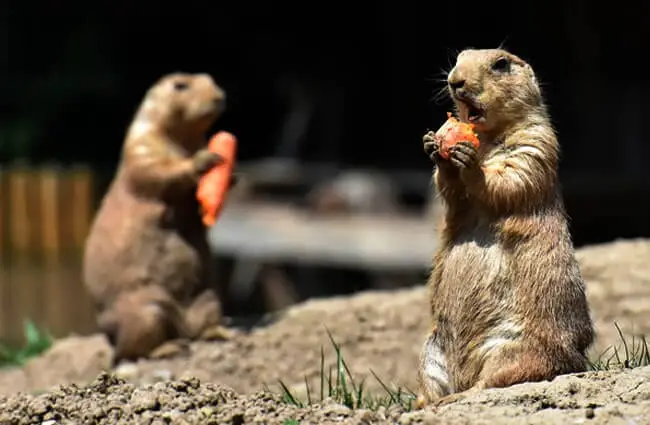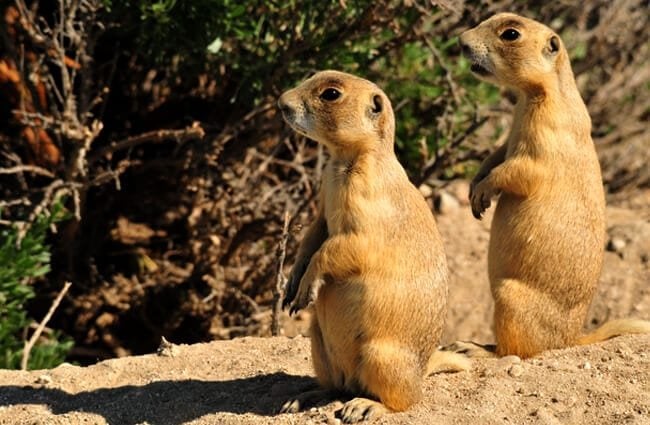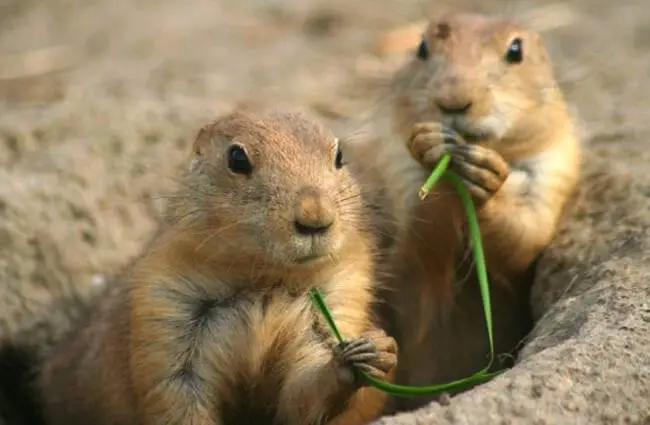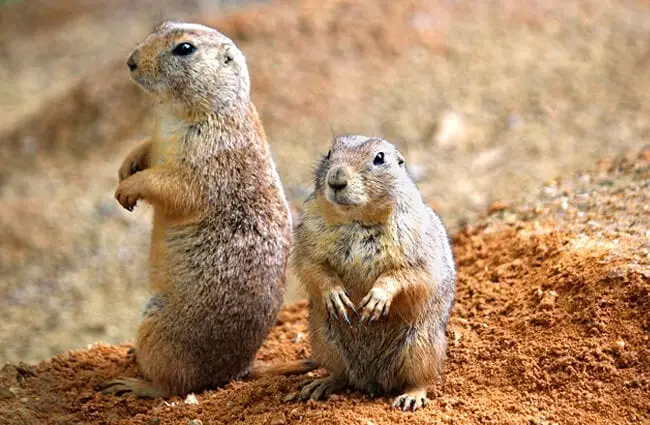Contrary to what their name might suggest, the Prairie Dog is a rodent, not a dog. These creatures are members of the Sciuridae, or squirrel, family.
Researchers place them in the Marmotini tribe, which contains the ground squirrels. Currently, five different species exist. Read on to learn about the Prairie Dog.
Description of the Prairie Dog
The five species look slightly different from one another, but generally have a similar shape and size. Their bodies have a similar build to other ground squirrels, with short limbs and mid-length tails. Unlike tree squirrels, these rodents do not have bushy tails.
They are not quite as large as the groundhog, but this species is relatively large for a rodent. Most individuals measure about 14 in. long and weigh 2 – 3 lbs.
Interesting Facts About the Prairie Dog
Each of the five species have different traits and adaptations. Learn more about each species, below.
- Gunnison’s – This species lives in the “Four Corners” are of the southwest United States. Their range sits among the borders between New Mexico, Arizona, Utah, and Colorado. You can find this species sitting on its hind legs watching carefully for predators.
- White-Tailed – Like their name suggests, this species’ distinguishing characteristic is the white color of their tails. This species has a keen dislike for the Wyoming ground squirrel. In fact, on occasion they occasionally kill the smaller species.
- Black-Tailed – While some other species undergo hibernation during the winter months, this species does not. Instead, they still search for food during the day, but utilize torpor at night. During torpor, the animal lowers its metabolism and heart rate.
- Mexican – As you might have guessed from the name, this species lives in Mexico. Researchers believe that this species split from the black-tailed species hundreds of thousands of years ago.
- Utah – This species is the smallest of the five. The largest adults reach lengths of about 14 in. or so. Their primary distinguishing characteristic is their coloration. These rodents have patches of dark brown colored fur.
Habitat of the Prairie Dog
As their name suggests, these rodents live primarily in prairie habitats. They live in grasslands throughout their range. These creatures also prefer sunken areas with shade to escape from the heat while patrolling for predators. All five species utilize underground burrows to escape predators, store food, and hibernate.
Distribution of the Prairie Dog
Each species has its own unique range and distribution. The Utah species lives only in a small portion of southern Utah. Another species that lives in its namesake location is the Mexican species.
The black-tailed species lives across a vast region from Montana to Texas. The white-tailed ranges through Wyoming, Utah, and Colorado, and the Gunnison’s lives throughout the “four corners.”
Diet of the Prairie Dog
The vast majority of this creature’s diet consists of plants, making them herbivores. They eat mostly grasses, shrubs, roots, and seeds. Though the different species don’t specialize on a specific type of plant, they do each have different preferences.
Prairie Dog and Human Interaction
Humans typically find this species to be a nuisance. Farmers kill the rodents because they eat crops in the immediate vicinity of their burrows. They also dislike the burrows because they believe the burrows could cause injury to horses or cattle who step in them.
Sadly, this extermination has resulted in decline for many species. Additionally, populations suffer from expanding agriculture and urban regions developing their prime habitats. The IUCN lists the white-tailed, black-tailed, and Gunnison’s species as Least Concern. However, they list the Utah and Mexican species as Endangered.
Domestication
Humans have not domesticated this mammal in any way.
Does the Prairie Dog Make a Good Pet
Some species actually make good pets. However, you should only purchase captive-bred pets. Animals caught from the wild can spread disease, and collection can harm wild populations. In some states, it is also illegal to own this creature as a pet.
Prairie Dog Care
Because these creatures are quite social, you need multiple animals, or you must meet their social needs yourself. To keep them friendly, you must socialize them thoroughly. They need large enclosures with artificial tunnels or areas to dig. Additionally, you need to provide fresh grass and hay for them to eat.
Behavior of the Prairie Dog
These rodents live in underground burrow systems. They have complex burrows with multiple chambers for sleeping, storing food, and more. Hundreds of individuals live in a single burrow system. These colonies contain multiple smaller family groups. The groups take turns keeping watch for predators, foraging for food, and more.
Reproduction of the Prairie Dog
Breeding occurs within the safety of their burrows. The gestation period lasts about a month, and most litters contain about four or five young. It takes another month or two for the mother to wean the young. During this time, the entire family group helps care for the young. The pups reach independence when they are between a year or two of age.













![Red Angus Closeup of a beautiful Red Angus cowPhoto by: U.S. Department of Agriculture [pubic domain]https://creativecommons.org/licenses/by/2.0/](https://animals.net/wp-content/uploads/2020/03/Red-Angus-4-238x178.jpg)












![Red Angus Closeup of a beautiful Red Angus cowPhoto by: U.S. Department of Agriculture [pubic domain]https://creativecommons.org/licenses/by/2.0/](https://animals.net/wp-content/uploads/2020/03/Red-Angus-4-100x75.jpg)

